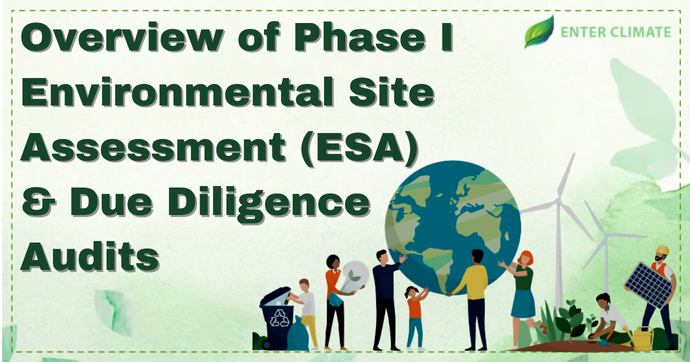Importance of Ecolabelling: An Overview
 15 Feb, 2023
15 Feb, 2023 
Ecolabelling is a type of performance labelling and refers specifically to providing information to consumers about the relative environmental quality of a product. These labels’ overall goal is to communicate verifiable and accurate information on the environmental aspects of products and services to the consumer.
Ecolabelling also encourages the demand and supply of the products and services that cause less stress on the environment and there by stimulates a market-driven environment improvement. Ecolabelling effectively identifies and establishes markets for green and efficient products and fulfils three primary objectives: encouragement of innovation in the environmental and efficiency sector, consumer engagement and most important-environmental protection. Ecolabel has also gained significance in international trade because of the GATT, executed by 22 nations (including India) in 1948, which insists on the transparency of the governmental agencies involved in trade agreements and international trade.
The Government of India made considerable efforts to promote environmental-friendly and sustainable products and services. MoEF&CC launched the eco-labelling scheme known as `Ecomark’ in 1991for labelling environment-friendly products. For instance, the Bureau of Energy Efficiency (BEE) logo became a symbol of energy efficiency, safety, quality and performance parameters of appliances and electrical products.
The following is the list of existing labelling programs in India
- BEE Energy Efficiency Labelling
- EcoCert
- Forest Stewardship Council Chain of Custody Certification
- Good Weave International
- Green Globe Certification
- India Organ
- UPS Carbon Neutral
- The Green Signal
- Ecotel Certification
- Fair Trade
- Better Cotton Initiative
- Global Organic Textile Standards
EcoMark Scheme in India
The EcoMark is awarded to those goods that meet the relevant standards of the BIS and other specific environmental criteria. The manufacturers needs to produce a clearance as per the provisions of environmental laws applicable for product packaging, display eco-friendly criteria in brief and have eco-friendly packaging.
As Eco-Marks help in identifying products that are eco-friendly, it is issued in categories like food, chemicals, electronic goods, medicines, paper, packing materials, etc.Out of these, 13 categories incorporated ecomark requirements in their BIS standards. The CPCB has identified the following products for ecolabelling.
- Aerosol Propellants
- Batteries
- Dry Batteries
- Cosmetics
- Electrical/Electronic Goods
- Fire-extinguisher
- Food Additives
- Food Items: Edible Oils, Tea and Coffee
- Leather
- Lubricating Oils
- Packaging Materials
- Paints and Powder Coatings
- Paper
- Plastic Products
- Soaps & Detergents
- Textiles
- Wood Substitutes
Implementation of EcoMark Scheme
The CPCB has set up ecolabellingguidelines,and the products can obtain the labelling if they meet the criterion set by the acts in Indian laws- the Air Act, 1981; the Water Act, 1974[1]; the Water Cess Act, 1977 and the Environment (P) Act, 1986. The presence of the ECO Logo and ISI Mark on a product shows that the product meets Environmental criteria and the Quality requirements as specified in the relevant Indian Standard.
Stages in the Application Process of Ecomark Certification
Stage 1: Application and Fee Submission:
A complete application in the prescribed form,along with the requisite fee,must be sent to the office of BIS. For each Indian Standard and product, a separate application with the requisite fee may be submitted to the Bureau.
Stage 2: Inspection of Premises:
The inspection officers from the BIS collect samples for independent and factory testing to assess the conformity of the product with promised specificationsand the requirements for Ecomark.
Stage 3: Testing of Product:
Independent test reports of samples are prepared after Preliminary Inspection and acceptance of STI (Scheme of Testing and Inspection). TheBIS/ Directorate of Plant Protection Quarantine and storage/ Directorate of Marketing & Inspection/organise and inspect the manufacturer’s units to evaluate the control exercised during production and the facilities available for carrying out tests on raw materials and on the final product. Only after the certifying agency has satisfied itself that the manufacturer has given a license to affix the Eco Mark on the product. Every license includes a well-defined scheme for testing and Inspection (STI), which the licensee has to follow strictly.
Stage 4: Grant of Licence to use Ecomark
In case of submission of documents and satisfactory site inspection and test reports a licence is granted by the competent authority of the BIS permitting the unit to use standard marks of the Bureau for a specified period.
Documents Required along with Application
- Consent NOC
- Environmental clearance certificate (as per the case)
- SSI registration certificate (if an SSI wants to avail concessional rate of marking fee for small-scale sector.
Advantages of Ecolabelling
Ecolabels aim at identifying and promoting products that can reduce environmental footprint as compared to other similar products. They encourage eco-friendly consumption patterns and incentivise governments, manufacturing entities, and consumer organisations to adopt sustainable best practices. The benefits associated with Ecolabelling are
- Incentives for the Manufacturer
- Reduction of the impact on the environment
- Encouraging citizens to purchase quality goods while making sure they are accountable
- Improve the quality of the environment.
Conclusion
The government uses its power to reduce environmental and health hazards due to industrialisation and encourages the development of eco-friendly technologies. National and international governmental agencies typically back Ecolabelling programs and schemes. The primary stakeholders of any ecolabel are the government, industry associations, consumers, scientific agencies, and not-for-profit organisations.The focusonincorporating feasible product criteria and positive lobbying of industry bodies can improve the visibility of this ecolabel and position it as a recognition of Indian efforts towards green products and commitment towards environmental protection at the international level.












